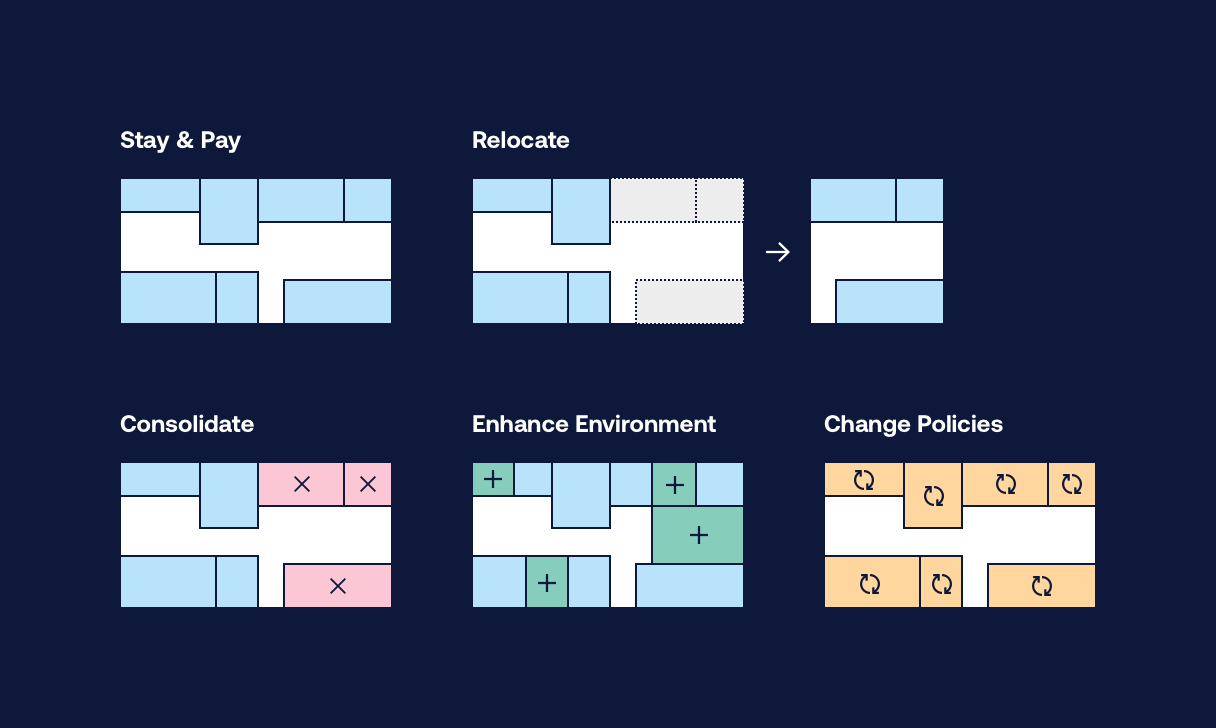We all know space is a valuable asset, but having too much of a good thing can be bad for business. If you suspect you have too much space allocated in your corporate real estate portfolio, chances are, you probably do… But to make your sneaking suspicion actionable, first you need data.
Whether you use manual counts, estimates, or platforms like Density, the first step is to quantify how much space is underutilized. With that done, you have the following options:

1. Stay and pay
It’s not always possible to make changes to a real estate stack, especially if you’re locked into a long-term lease. No one likes this option, but companies are often left with no other option but to stay for the remainder of the lease. But it doesn’t just stop there—this is a great time to kick off a space utilization data initiative. Capturing data today to plan for future needs not only benefits the company, it positions you and your team as action-oriented leaders in the business.
2. Relocate
Utilization data helps inform site selection during a relocation. With accurate utilization data, your can select the right amount of space with the right mix of space types. Example: if you know your six person conference rooms are used by one person for more than 50% of the time, you can select a new space that has more phone booths and smaller meeting rooms types.
3. Consolidate
Knowing how space is used makes it easy to dispose of underutilized resources. For example, a Fortune 500 needed to decide how many floors to sublease during a redesign. They found they were only using 30% of the building, and saved hundreds of thousands of dollars by subleasing. The goal isn’t to densify space at the expense of employees, but to find an optimal amount of real estate by providing only the types of spaces that employees actually use.
4. Enhance environment
Organizations typically enhance the workplace environment by adding amenities, adjusting furnishings and changing room sizes. Conference rooms are one of the clearest opportunities for room redesign. Most meetings are two or three people, but most conference rooms are designed for six. Companies use utilization data on their own conference rooms to allocate the right mix of space sizes for their employees needs. At Density, we were able to redesign a conference room in just minutes to increase utilization by 246%.
5. Change policies
Companies are adopting new policies that give employees access to a variety of spaces, but no designated desk. Unlike a traditional office, activity-based work introduces unassigned seating. Sometimes called “hotelling” or “hot desking,” the concept is that employees can use different spaces throughout the day for different work patterns.
Whether you’re planning for future projects or improving your existing spaces, utilization data specific to your own employees makes for better decisions. Matt Harris, Head of Workplace Technology at Envoy, explains, “When we think about a workplace that works, we think about the need to be able to responsive [to employees] in the moment.”
